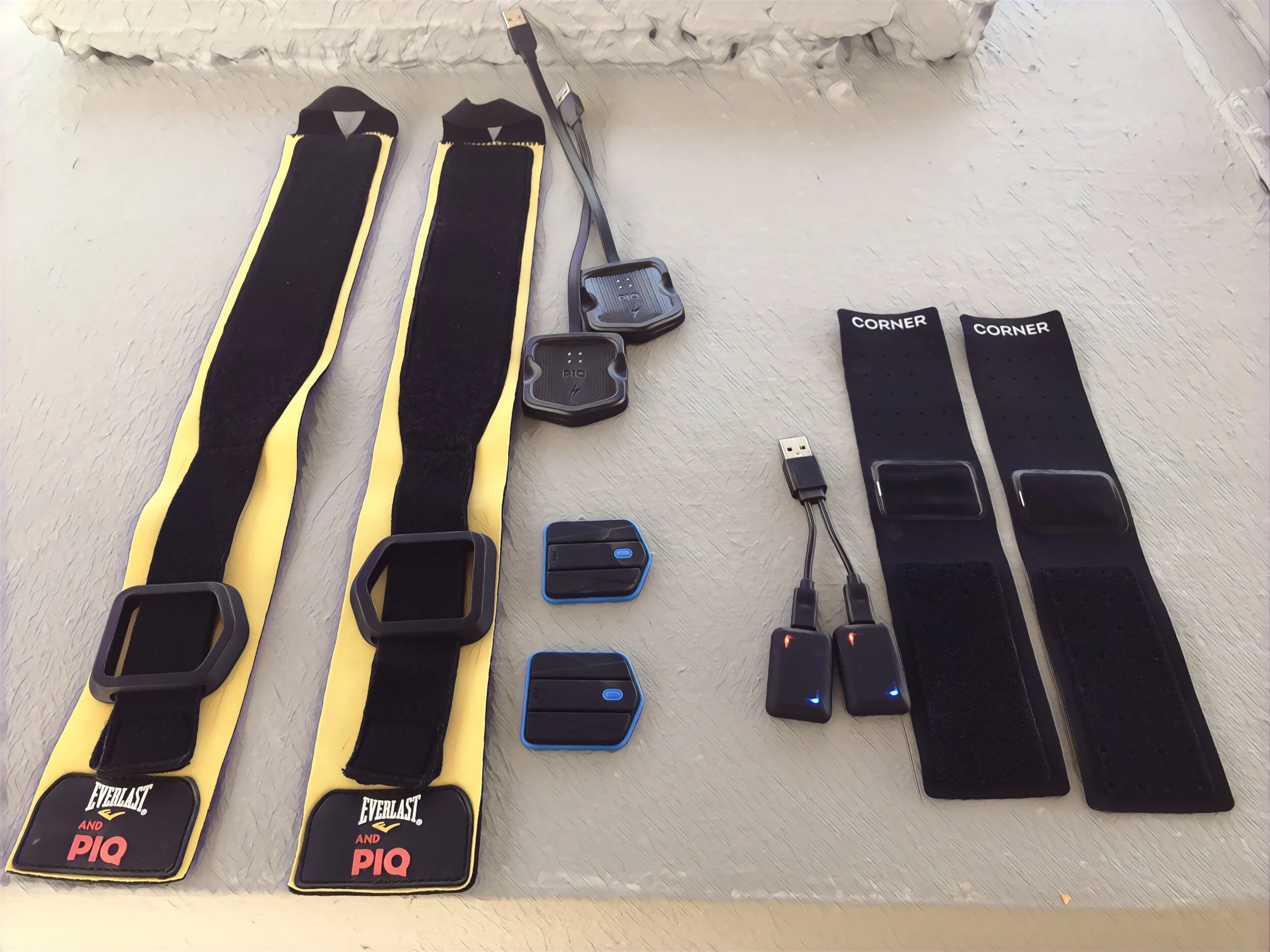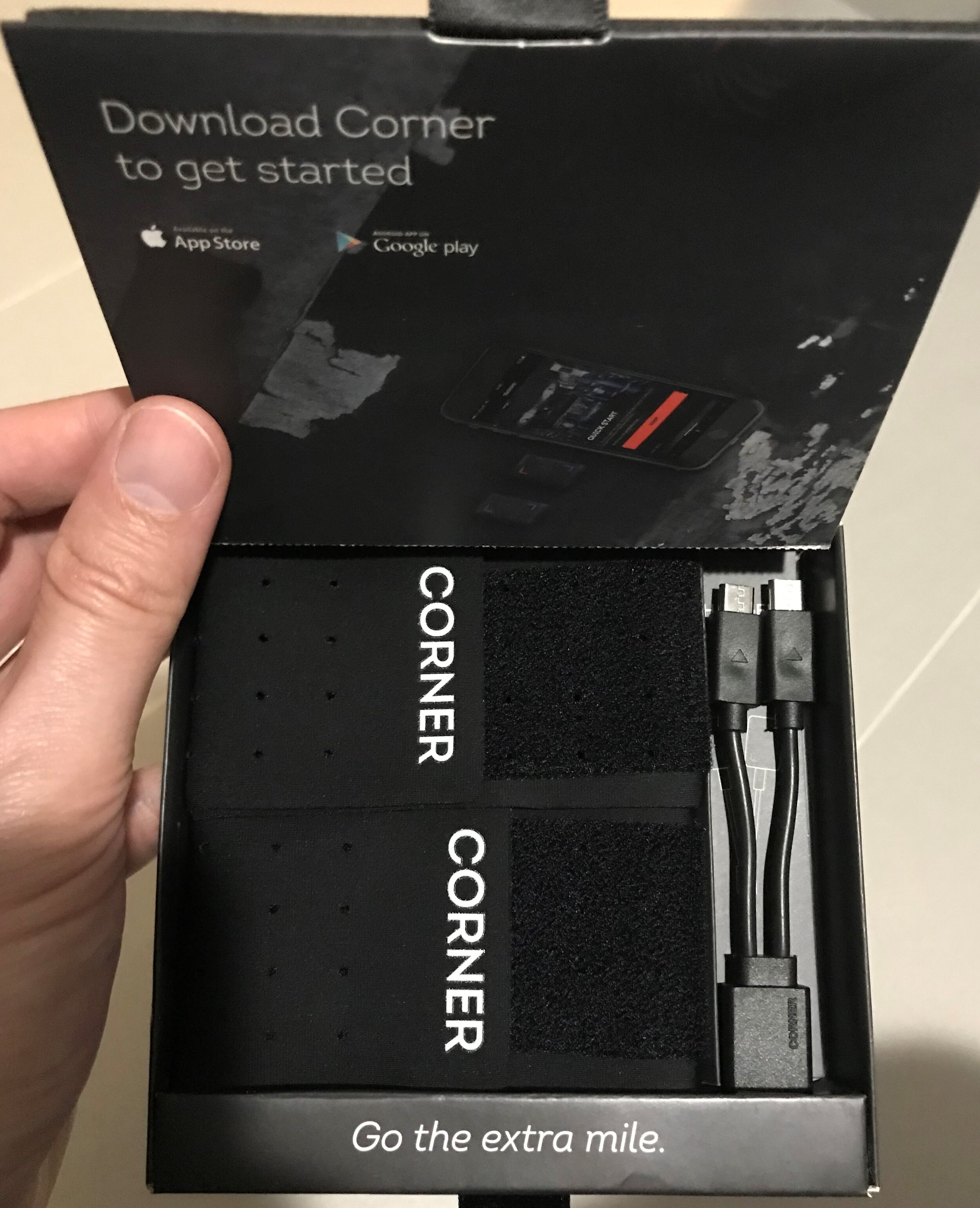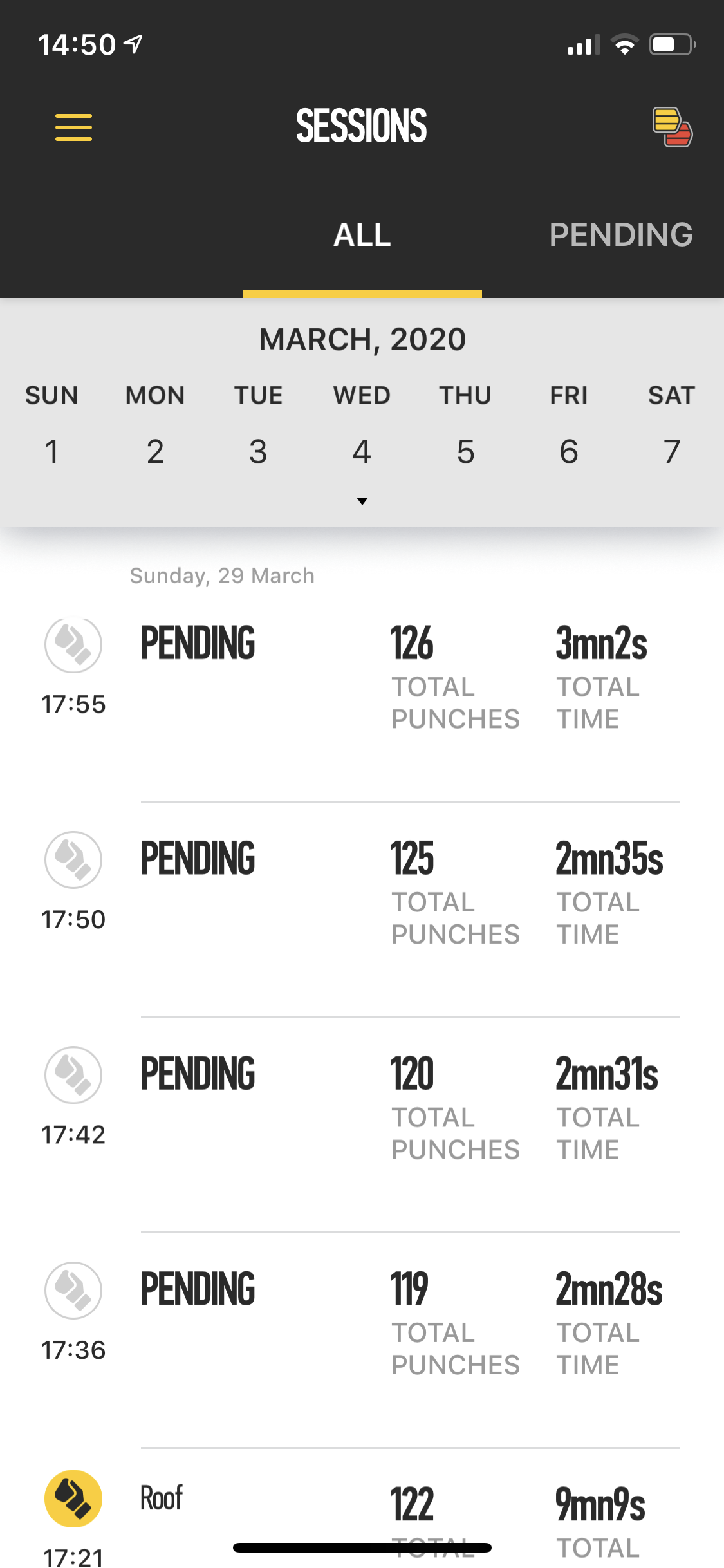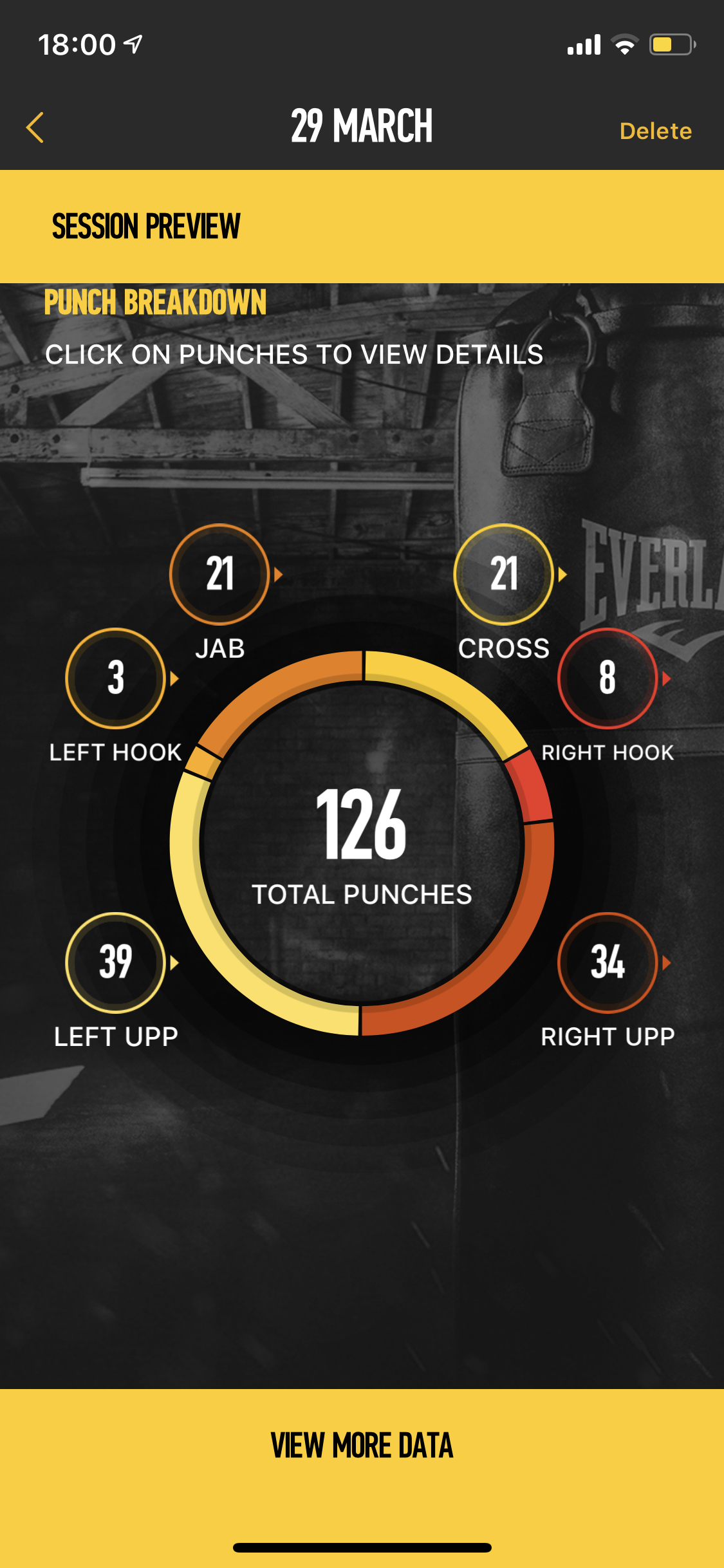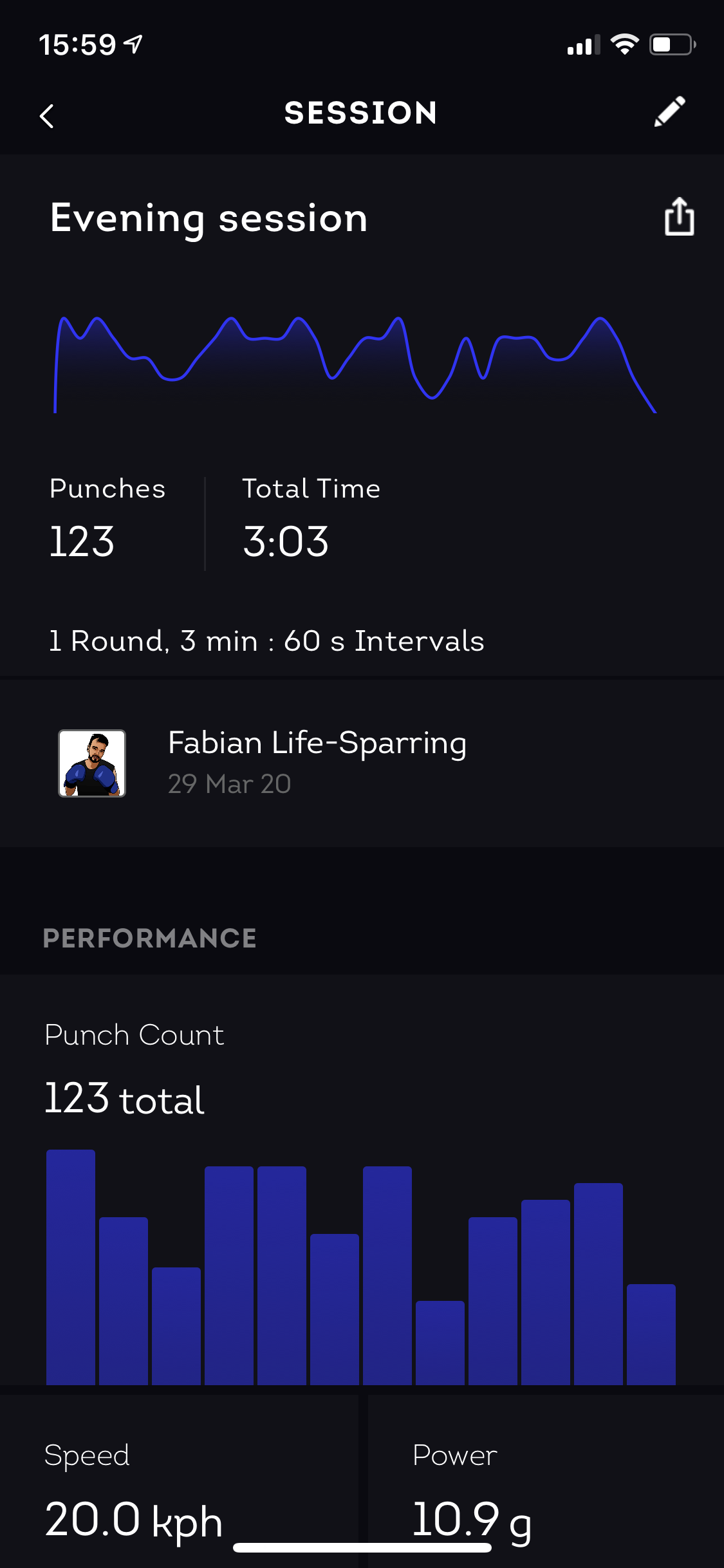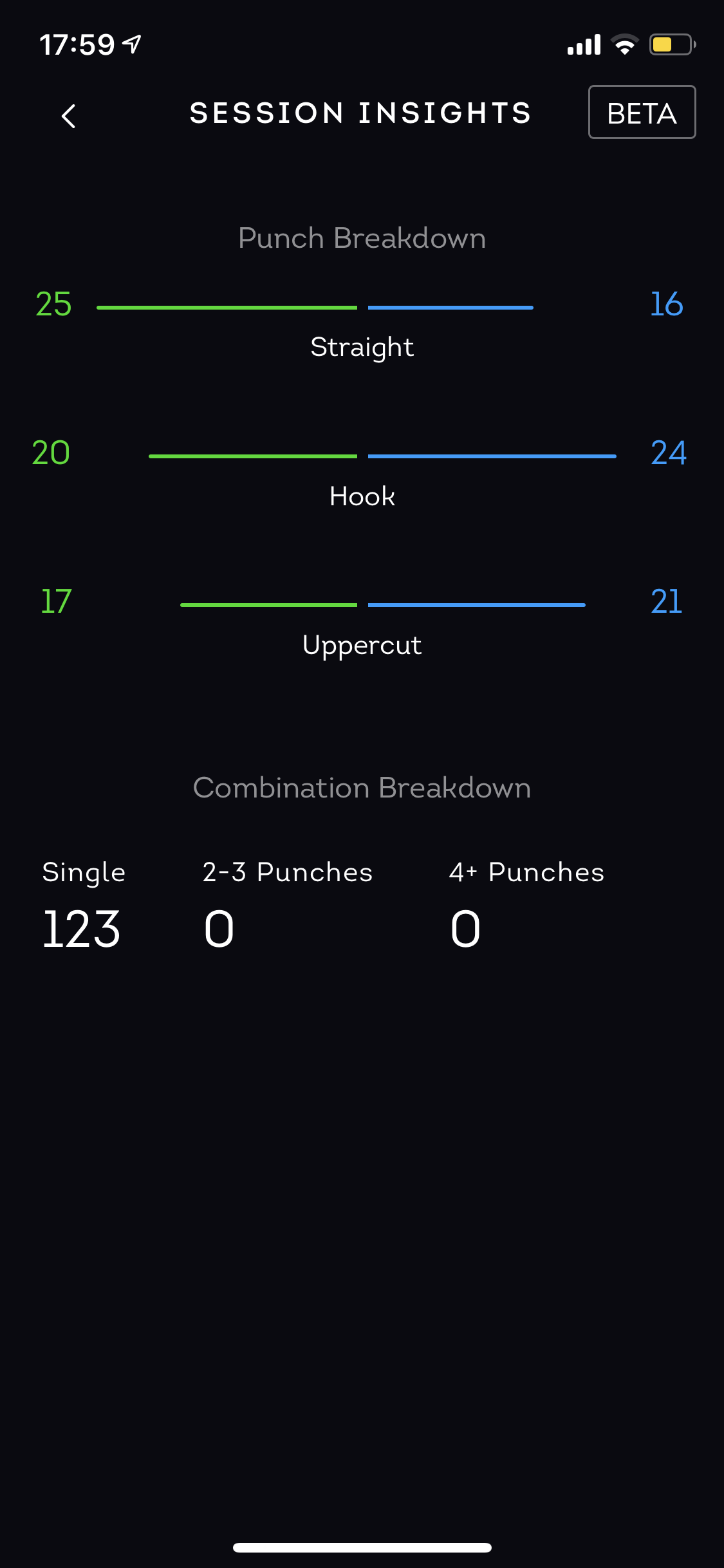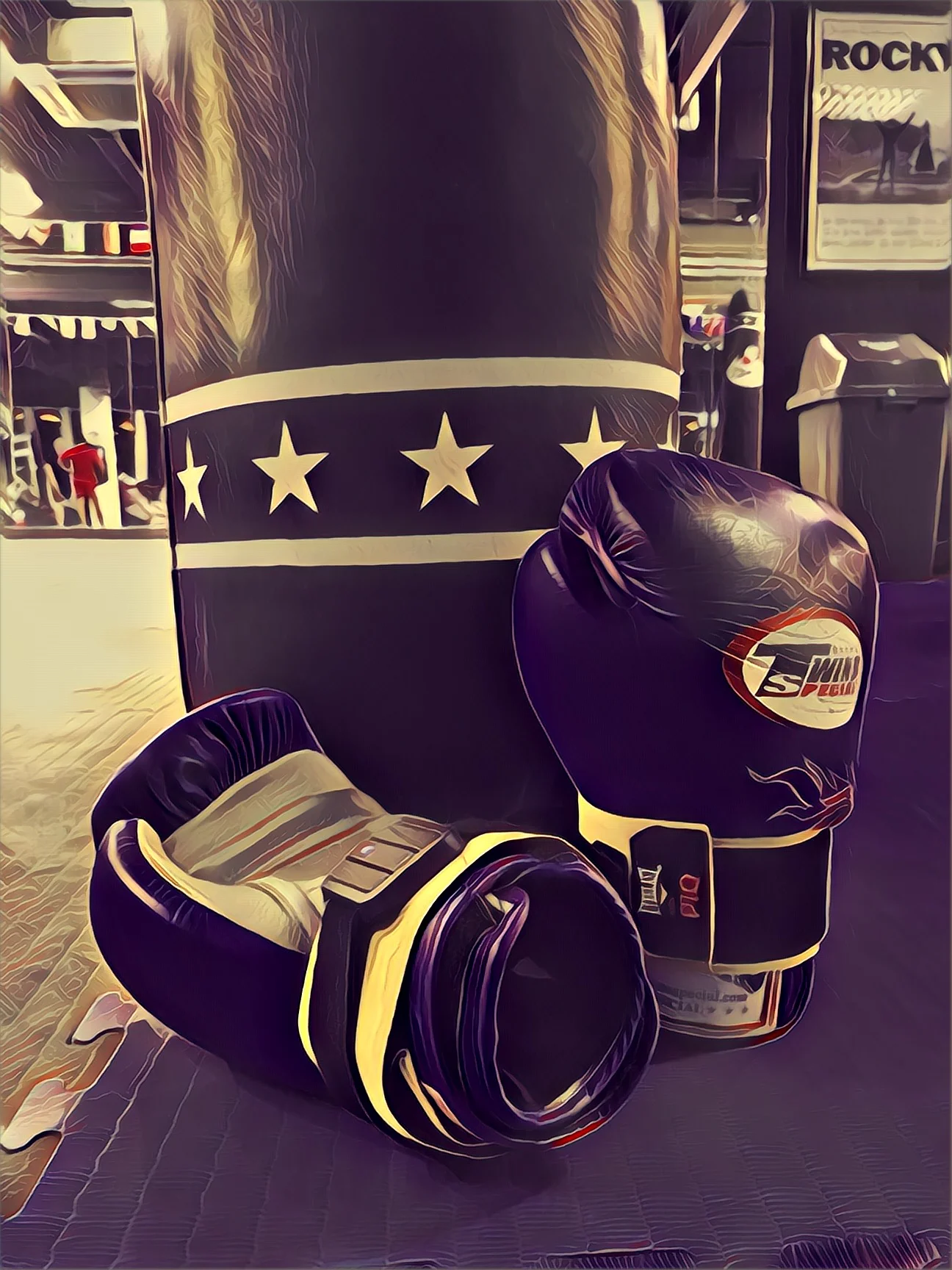A Contender for the Digital Golden Glove? Can the Corner Boxing Sensor Square Up with Everlast
Boxing is a beautiful sport and all about the masterful use of a very restricted set of offensive tools. There are jabs, crosses, hooks, and uppercuts; the rest is avoiding getting hit by slipping, bobbing, and blocking and occasionally taking a shot well.
The simplicity of boxing makes it possible to quantify workouts with comparatively cheap sensors. It only takes some accelerometers, gyroscopes, and a smart algorithm to capture meaningful data for your boxing workout.
End of 2017, I reviewed the PIQ+ Everlast boxing sensor, an ear entry into the market of boxing sensors for hobby boxers. The Everlast and PIQ article remains one of the most popular Life-Sparring rounds to date, largely thanks to the Google search rank.
As it occasionally happens when you review a niche product, competitors reach out to you. That is how the team behind the upstart “Corner” contacted me and offered me a review sample (just like PIQ had done previously). They sent me a testing unit in December 2018, but work commitments took its toll on me, and I never got to finish the article I began writing after testing the Corner. Shame on me.
With large parts of the world currently on lockdown due to COVID-19, finalizing the review of Corner seemed timely and relevant. As boxing classes and proper sparring are off the limit these days, having a little digital boxing coach at home and measuring yourself against a worldwide community seems attractive.
That is why I went back to work in my little rooftop gym that includes an Everlast Hydrostrike Heavybag (Amazon Affiliate Link), and spent some more time with Corner, testing the app and sensors, while enjoying a gentle Hong Kong spring breeze.
Round 1: The First Impression – Corner, a Contender in a Different Weight Class
Just receiving the tiny envelope from Corner, it was clear that the Corner boxes in a different weight class than the PIQ Robot. The Corner sells in a pair of two sensors and ships in a sleek rectangle-shaped box, way smaller than a PIQ packaging for just one sensor.
Motivational statements on all sides of the box make unpacking Corner fun and reveal two tiny sensors, two equally little wristbands, and a small micro USB double charger. The side by side picture shows the significant size difference between the small Corner and the comparatively huge PIQ across all components: sensors, hand wraps, and charger.
Corresponding to the size is also the pricing for both sensor contenders: Corner is priced at US$ 139.99, for a set of two sensors, with free worldwide shipping, while Everlast and PIQ costs US$ 99 plus shipping; for a single sensor that is. A set of two PIQs from the official website, including shipping to Hong Kong, costs a whopping $ 207.9.
Both sensors are priced and built so differently, that it is almost impossible to compare them. Score 10:10
Round 2: A small Black Box – What’s inside of Corner Remains a Secret
Corner’s website is tight-lipped when it comes to the technical details of the sensor. The closest that it gets to a technical reveal is in an "our journey" blog post. Given that Corner also mainly tracks speed and acceleration, it is likely that the Corner has similar accelerometers and gyros on board as the PIQ.
One piece of hardware differentiates both the Corner and the PIQ. While PIQ packed 8 MB of flash memory in its casing to save the data of multiple sessions on the sensor and sync with the phone at a later point in time, Corner is meant to stream in real-time to the phone app. However, on the website FAQ, it is stated that Corner will buffer data in case of losing the Bluetooth connection, so it should have at least some memory on board.
Without more info from Corner about the technology of their sensor, it is hard to compare both systems. PIQ scores for being more forthcoming and likely packing more hardware: Score 10:09
Round 3: Getting Ready to Rumble – The Setup
The setup of Corner is straightforward: download the Corner App (search "Corner Boxing" in the app store), charge the sensors, put them on, activate Bluetooth on your phone, double-tap the sensors, and off you go.
Different from PIQ, Corner does not have a designated left and right sensor. Instead, every workout begins with a single jab and one lonely cross, to assign the sensors to either the left or the right hand. I liked this a lot as I tend to confuse my PIQ sensors, despite having a small sticker at the bottom of the designated left-hand unit.
Both sensors are very straight forward to set up. I do like that the Corner sensors are not permanently assigned to a hand and see a slight advantage for the contender. Score: 09:10
Round 4: The Corner App in Action
Like in the Everlast and PIQ app (there the live option is called a "drill"), you can either do an interval workout (you choose the round times, the first round starts with the first punch) or do a free session where you record without the app ringing the bell for you.
Live screen in the Corner App.
As mentioned previously, the Corner is mainly designed to live-broadcast your workout to the phone via Bluetooth. While you are hitting the back, chasing your shadow, or jabbing at tour sparring partner, your phone shows visualizations of your power and frequency on the screen while you are working out.
As I mainly do bag work by myself, I rarely glance at the screen during a round. Only in the breaks do I usually look at the data to get an idea of the punch count and the clock.
With PIQ, you can either do a live session similar to the Corner's interval training or you record sessions without the phone in range and synchronize the sensor data with the app after the training.
With the clever hands-free control of the app, Corner scores some points. By touching both cloves in front of you can drill down in the current menu, tapping your right and left leg, scrolls right, and left. This navigation works surprisingly well.
During a round, the app shows the time elapsed, the total numbers of punches thrown, and a work rate, visualizing the intensity of the workout. It also shows an average value for speed and power; the metrics are not too different from PIQ.
After you finish your session, you can dig into the data by tapping for details. This leads you to the session overview showing you the work rate, the total number of punches, and the total time.
Below this summary data comes the total punch count, with averages for speed and power. Once you click on the bar chart, you can see punch frequency, speed, and tower over the round. Further down come style insights, from where you can get to the breakdown of punch styles. You also see the number of combinations thrown.
The hands-free handling of Corner is nice. Visually I like PIQ’s data screens much better. Both round timers work fine, PIQ’s sensor being able to record sessions without the phone in Bluetooth range is a plus. Another close call: I’d score it a draw: 10:10
Round 5: Insights and Features
Compared to PIQ and Everlast Corner focuses on the basics. The app design is functional and straightforward, but not exactly pretty. PIQ and Everlast comes across much sleeker as you expect from the defending champ.
Also, in terms of data displayed, Corner stays close to the basics: the number of punches thrown, average values for speed and power, and break down of punches is what you get.
PIQ tries to interpret your session data further, providing you” Winning Factors” a la: "Your Left uppercut is devastating."
Corner is also lacking an inbuilt community, so if you are motivated by making the monthly dashboard or virtually beating your friends, Corner leaves you on your own devices.
However, Corner scores a clear knockdown with the possibility to export session data as a CSV file. The export file does nothing less but exporting every single punch recorded, with time, punch type, speed, and power! That is data mining heaven for every quantified self-geek. PIQ does not provide this raw data, possibly to protect their algorithm from reverse engineering.
The data download evens the round for me, Score: 10:10
Round 6: Crooked Hooks? – Accuracy and Digging into Session Data
Being in the lucky position to have two different boxing sensors on hand, I decided that doing a few rounds with both sensors running in parallel was the obvious thing to do.
Two sensors, one hand: Everlast and PIQ and Corner.
Felling like the DC Rainmaker of boxing sensors, I double wrapped each of my hands with two sensors. As the Corner is tiny and worn on top of the wrists, while the PIQ is worn under the wrists, working out with both sensors is not that difficult. Making use of the PIQ sensor's ability to record a session without connection to the app, I used the Interval Mode on the Corner app and recorded freely on PIQ to avoid potential issues screaming simultaneously to the phone.
To have a fair assessment of both sensors' accuracy, I did a simple test with both sensors: 20 Jabs, 20 left Hooks, 20 left Uppercuts, succeeded by 20 Crosses, 20 right Hooks, and 20 right Uppercuts.
As Corner starts every session with one Jab and one Cross to identify the left and the right hand, the Corner's record of the test round should show 120 punches, and the PIQ sensor should show 122, 20 of each and each one extra Jab and Cross.
Now I am the first to admit that I am not exactly a boxing technician. In my years training Muay Thai, technical training was never the focus. My bad technique and my stiffness might pose a severe challenge to the sensors to pick up my punches accurately; nevertheless, the result of the initial test done in early 2019 surprised me.
Both apps had massive problems to recognize my hooks. While PIQ at least got the total punch count right (122), the Corner cut a few corners and counted only 91 punches, a shortfall of a whopping 24%.
As previously mentioned, I never got around finishing the article in 2019, and both sensors issued multiple firmware and app updates since 2019, I decided to run back the clock and redo the test in the Spring of 2020, putting in a few more test rounds.
Unfortunately, the results were not much better. Both apps were quite inconsistent. PIQ and Everlast counted the total number punches mostly right but often struggling to recognize my hooks, classifying them either as straight punches or uppercuts.
Corner generally tended to underreport across the different techniques, counting on average just 105 punches where it should have recognized 120. It seems that the Corner algorithm is programmed to ignore movements he cannot exactly relate to a punch, while PIQ classifies questionable moves as whatever movement pattern is closest.
As mentioned previously, with my lousy technique, I am not the best testing subject, so I would not want to overinterpret my n=1 data.
Has anybody else done similar tests? I would be extremely curious to hear about your experience regarding the accuracy of both sensors.
In terms of power and speed, both sensors agree in terms of trends and direction but show significantly different values. For example, for the last of the test rounds with 20 punches thrown each, Corner registered an average speed of 15.35 kph for my jabs, while PIQ recorded 17.8 kph. In terms of power, Corner grants me an average of 10.42 G for my left straights, while PIQ just has me on an 8.4 G average impact. As I do not have any way to verify either of the values, I would not overinterpret them and use them at best as trend indicators: do I get stronger or not compared with my last session? I have no idea whose data can be trusted more.
The Score for round six? Difficult, but I would say a 10:09 for the title defender, due to the tendency of Corner to underreport the total number of punches. A much messier round than expected.
The Scorecard After Six Rounds: The Heavy Weight Edges Out a Win
Adding up our scorecard, we get to 59 to 58; the title defender Everlast and PIQ edges out a narrow defense. With the price difference, the option to download all captured data, and its easy handling, Corner has a strong claim to the throne.
The title defender PIQ counterpunched with more in-depth analytics, an inbuilt community, sleek graphics, and slightly more consistent data. If you are on a smaller budget but want to start quantifying and analyzing your boxing workouts, Corner is a good choice. If you're going to run your analytics punch by punch, go for Corner as the CSV export will make the difference for you.
If you want more insights, the more beautiful interfaces, and a scoreboard to aim for, PIQ remains the better of the two choices.
If you have one of the two sensors and want to share your experience, or if you think you can teach me how to throw a hook that the sensors can recognize as such, reach out!
In any case, keep your hands up, protect yourself at all times, and keep on Life-Sparring!

